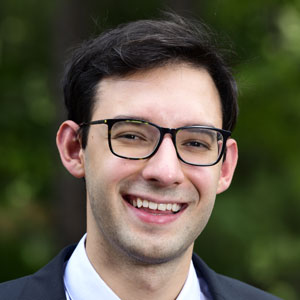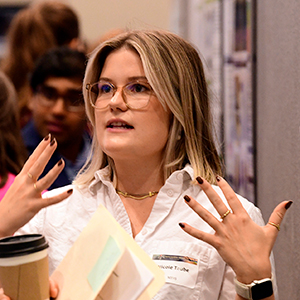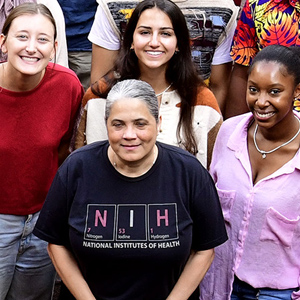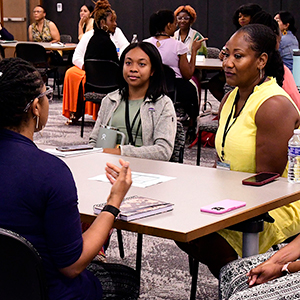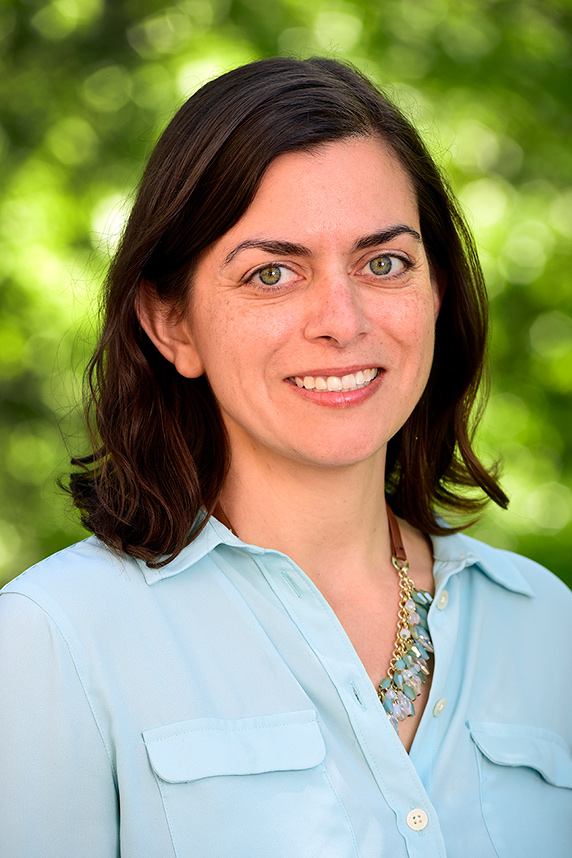 Rider co-chairs the NIEHS Combined Exposures/Mixtures working group. (Photo courtesy of Steve McCaw)
Rider co-chairs the NIEHS Combined Exposures/Mixtures working group. (Photo courtesy of Steve McCaw)Chemicals in consumer products and career options for early-career researchers who want to study how environmental agents may affect human health were among the topics discussed at the 2020 meeting of the North Carolina Society of Toxicology (NCSOT).
Cynthia Rider, Ph.D., from the NIEHS Division of the National Toxicology Program, is president of NCSOT.
Held online Sept. 17, 21, and 23, the conference featured several presenters from the institute.
Fellow shares experience
John Schelp, special assistant for community engagement and outreach at NIEHS, moderated two career panels. One was aimed at undergraduates, the other at postdoctoral trainees.
During the panel for undergraduates, Saniya Rattan, Ph.D., an Intramural Research Training Award (IRTA) fellow in the institute’s Reproductive and Developmental Biology Group, shared information about her career path and research.
“I use genetic mouse models to investigate how different factors play a role in developing the ovary,” she said. “One of my favorite parts of my job is that I work directly with animals. I get to work with genetically modified mice, and some of them express fluorescent protein, meaning I get to work with glowing ovaries. Sometimes they are green, sometimes they are red. And you know what? That is pretty cool,” Rattan told the audience.
 When she is not in the lab, Rattan contributes to the Environmental Factor. (Photo courtesy of Steve McCaw)
When she is not in the lab, Rattan contributes to the Environmental Factor. (Photo courtesy of Steve McCaw)“Life as a postdoc is so much fun because I get to play around in the lab, but it’s also stressful because I need to get results and show that I’m productive,” she said. “But at the end of the day, I get to help the public. My research helps to provide information about how normal ovarian development occurs. That knowledge provides a foundation to then identify the impacts of the environment on the ovary.”
Reproductive development, PFAS, and more
The event included the following keynote presentations.
- “Growing Up and Leaving Home: Emerging from the Teenage Years in 21st Century Computational Toxicology,” by Rusty Thomas, Ph.D., director of the U.S. Environmental Protection Agency (EPA) Center for Computational Toxicology and Exposure.
- “Quantification of the Uncertainties in Extrapolating From In Vitro Antiandrogen and Short-Term In Vivo Assays to Adverse Reproductive Development in Male Rats,” by L. Earl Gray, Ph.D., research biologist in the EPA Reproductive Toxicology Division.
- “PFAS [per- and polyfluoroalkyl substances] at Biological Interfaces: What Do We Know About Drivers of Bioavailability and Tissue Distribution?” by Carla Ng, Ph.D., assistant professor at the University of Pittsburgh.
Cadmium exposure and GenX
A major part of NCSOT efforts involves fostering research among graduate students and postdoctoral trainees, and this year’s meeting was no exception. The event included graduate student presentations on topics such as cadmium exposure and the chemical GenX, a poster pitch competition, and the annual NCSOT President Award for Research Competition, or PARC (see sidebar).
NIEHS grant recipient Scott Belcher, Ph.D., from North Carolina State University, is NCSOT vice president. Another grantee, Julia Rager, Ph.D., from the University of North Carolina at Chapel Hill, helped to organize the meeting. Kristen Ryan, Ph.D., from the NIEHS Division of the National Toxicology Program, is vice president-elect.





